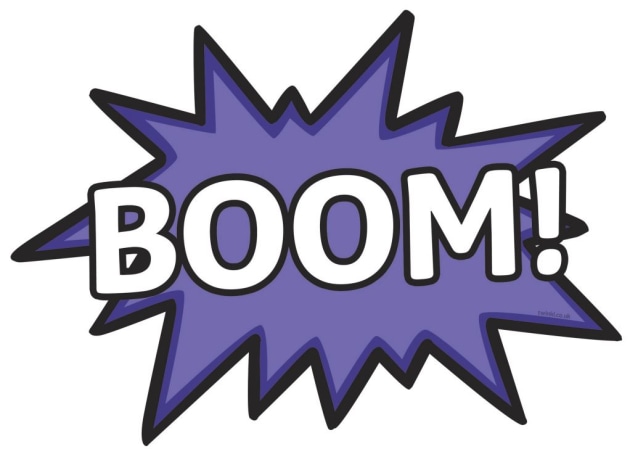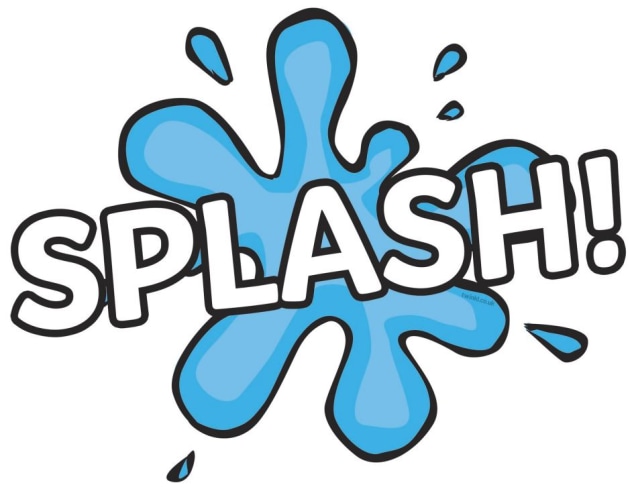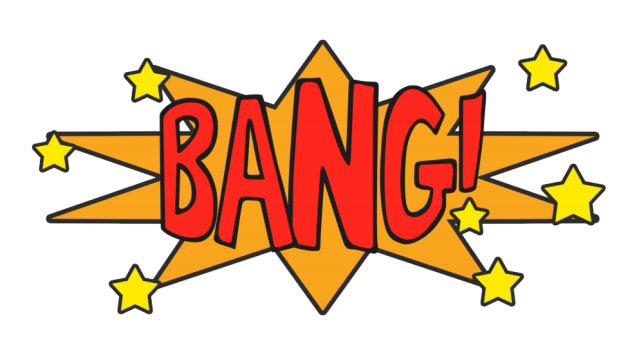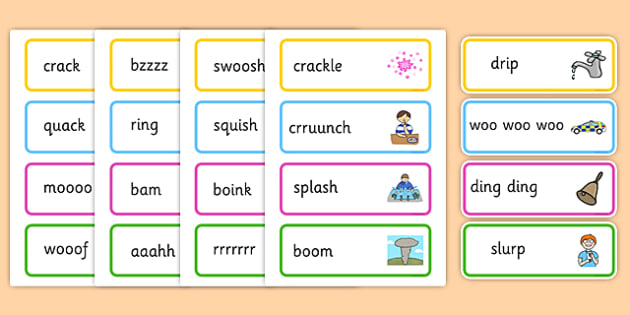
What is Onomatopoeia?
Onomatopoeia
What is Onomatopoeia? Read below to find a handy definition for kids, detailed examples, and to learn how to introduce this language feature to children.

What is an onomatopoeia?
Onomatopoeia is a type of word that represents a certain sound and is often used for literary effect. In other words - when they said out loud, onomatopoeic words phonetically imitate the sound that they describe.
They are often used to add emotion and make writing more fun, expressive and vivid. They are a literary device within figurative language.
What is an onomatopoeia for kids?
In general, words are used to tell you what is happening. The unique thing about onomatopoeia is that these words tell the reader what they should hear. It has an effect on their senses - whether the reader is aware of it or not.
Onomatopoeia appears in many languages, not just English. We use these types of words to describe a variety of things, including actions and animal noises.
Did You Know…?
The word onomatopoeia comes from the two Greek words onoma, meaning "name" and poiein meaning "to make". So, in a literal sense, onomatopoeia means "to make a name (or sound)".
For many young students, learning to spell the word onomatopoeia is a landmark achievement!
A handy trick for spelling this long word is to sing the letters to the tune of Old McDonald.
Oh en oh em ay te oh / pe oh ee i ay
Examples of onomatopoeia
It can be hard for children to understand what an onomatopoeia is without examples.
There are lots of great examples of onomatopoeia in English, some of which we use more regularly than others. For example, onomatopoeic words are used a lot in comics and graphic novels to express sound effects, words like:
- CRASH!
- WHACK!
- BOOM!
The words we use to describe the verbal communications or actions of animals are also examples of onomatopoeia:
- Bark!
- Meow!
- Scratch!
These are all onomatopoeic words because they symbolize a specific sound and, consequently, make us think of that sound.
Common Letter Combinations
In English onomatopoeic words, there are some common letter combinations that are used in the same categories of sounds. Here are some of the most common examples:
Water Sounds
 Words related to water or other liquids often start with sp- or dr-. For example:
Words related to water or other liquids often start with sp- or dr-. For example:
- splash
- spray
- drip
For small quantities of water, the words also commonly end in -le. For example:
- drizzle
- sprinkle
Collision Sounds

For collisions of two objects together, there are a number of common letter combinations. For example, words that start with cl- suggest that there's been a collision between glass or metal, like:
- clink
- clatter
Other collision sounds end in -ng, which suggests that the sound resonates or echoes for a while after the collision. For example:
- clang
- ding
- bang
There are lots of other examples of letter combinations that make up characteristics of common onomatopoeic word groups, like air sounds. Students will certainly know some of these animal noises:
Animal Sounds:
- oink
- meow
- woof
- cheep
- hiss
- moo
- purr
- quack
- cluck
Human Voice Sounds
- murmur
- munch
- chomp
- growl
- grumble
- grunt
- gulp
- hum
- shh
In other languages
There are plenty of examples of onomatopoeia in languages other than English too. These words are used in the same way as they are in English but often reflect differences in pronunciation etc. For example:
- "Pachi pachi" is used to represent the sound of a fire in Japanese
- "Manpf manpf" describes the munching sound of someone eating
- "Gav gav" is used to represent barking
- "Ron-pshi" is used to describe snoring in French
Another interesting example is the common onomatopoeia that different languages use for the sound of a clock:
- In English, we use the words "tick tock".
- In Spanish and Italian, they use the words "tic tac".
- In Mandarin, they use the words "dī dā".
- In Japanese, they use the words "katchin katchin".
- In Hindi, they use the words "tik-tik".
Use of onomatopoeia
Onomatopoeic words are used in a variety of ways both in speech and in literature. Although they're primarily used as nouns, adjectives and adverbs, such as crash, bang and wallop; onomatopoeic words can also be used as verbs, for example giggle, growl, chatter, mumble, slap and clap.
You'll notice that there's a pattern with some onomatopoeic verbs - many of these represent vocal sounds. These are often used in literature to describe a certain way of saying something. For example, mumbled creates a more detailed mental image of someone speaking quietly and sheepishly.
A great example of onomatopoeia in literature is this poem by Australian poet Lee Emmett:
"water plops into pond
splish-splash downhill
warbling magpies in tree
trilling, melodic thrill
whoosh, passing breeze
flags flutter and flap
frog croaks, bird whistles
babbling bubbles from tap"
Can you see how his use of water onomatopoeia paints a picture in your head and helps you to understand the sounds that he's describing?
They're not just found in nursery rhymes and comics, but also in modern music. Take a look at this short video too for more examples of onomatopoeia that you may have heard before in popular songs:
So, as well as the common collision and animal sounds, there are many onomatopoeic words to represent sounds that are used for literary effect to create a certain image or atmosphere for the reader.
When is onomatopoeia introduced at school?
Although this may seem like a complex idea to introduce to children early on in school, it's actually a feature of speech they may already be familiar with. So, even if they can't already recite a textbook definition, kids are likely to be able to recognize these useful sound-words. Many children's books and TV shows will use examples of onomatopoeia to engage their young audience.
This literary device will be taught as part of figurative language during ELA lessons, particularly in grade five for the Common Core Standard L.5.5. which requires students to:
"Demonstrate understanding of figurative language, word relationships, and nuances in word meanings."
You can explore these expressive words in upper-grade English lessons. Students could gather their favorite onomatopoeia and use them in an original comic strip, or a poem. You'll find some examples in our Figurative Language Reference Cards, and you can display our helpful Literary Devices Poster as a reminder of what an onomatopoeia is for kids.
Twinkl Tips for Teaching ELA
Sometimes, these figures of speech may get confused with interjections - but these are verbal outbursts such as "woah" and "ouch". They are similar in that they communicate an emotion rather being literal words.
Figurative language covers any kind of writing that breaks the normal rules of English to bring color and impact to the text, and this is an important part of creative writing that children should learn about. Using literary devices effectively such as onomatopoeia brings language to life, and can be used in songs and persuasive writing too.
Studying language arts is a valuable pursuit that will help children express themselves well and communicate through both writing and speech, so feel free to get creative in your teaching of this subject.
 Home
Home  Membership
Membership  Customer Support
Customer Support  Create
Create  Blog
Blog 























